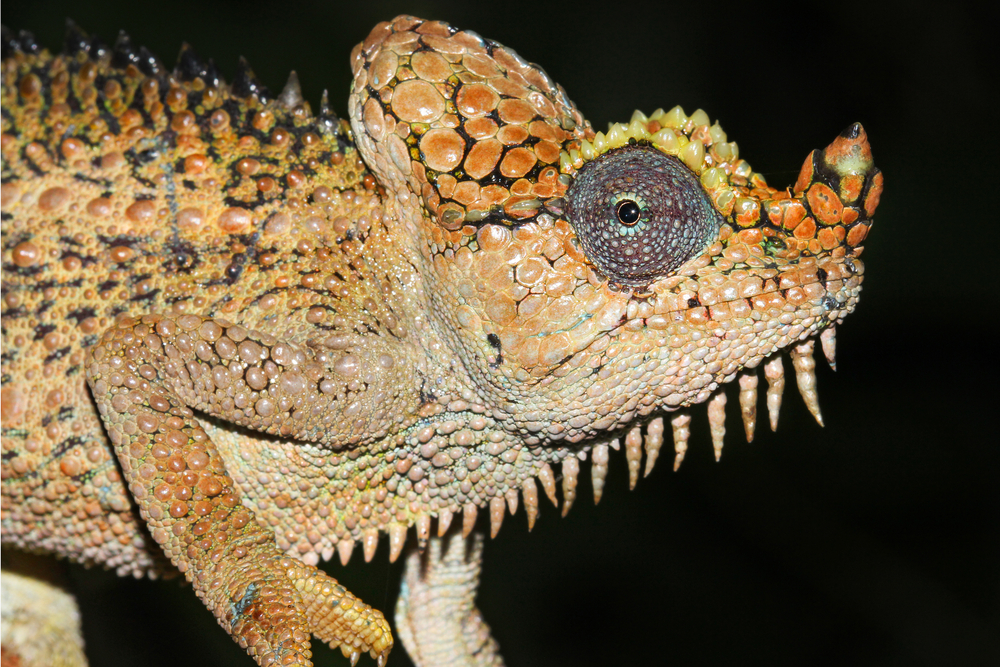Trioceros hoehnelli also known as they “high-casqued” or “Hoehnell’s” chameleon is a montane species from equatorial Africa. Found up to 3,000m in elevation in Kenya and adjacent Uganda, this species is extremely well adapted to drastic temperature changes making them well suited to the specialist keeper who understands their ecology.
Being a montane species, the high-casqued chameleon is separated into various populations on different mountains and slopes across Uganda and Kenya. Each population has a unique colouration. Certain populations are more locally abundant than others and some were more frequently exported and bred than others. Today, captive-bred Trioceros hoehnelli are occasionally available in Europe and the USA, but slightly harder to come by in the UK.

High-Casqued Chameleon husbandry
Perhaps the most important aspect of high-casqued chameleon husbandry beyond usual chameleon care considerations, is a night-time temperature drop. Most keepers will maintain their Trioceros hoehnelli at a cool 22℃ with access to UVB and a basking spot no warmer than 25℃. Young chameleons can die if they are kept any hotter than this. Furthermore, temperatures should drop below 15℃ at night (far cooler than a typical household). In the wild, temperatures can easily fall to 0℃ and the chameleons seek shelter to avoid frosts. Whilst it is not recommended to drop to this extreme in captivity, the chameleons should be housed outside, in a well-ventilated greenhouse, or in a garage to ensure the conditions drop below room temperature each night. It is also worth noting that hydration should come from a nightly humidity spike of 100% as well as daily morning and evening misting.
High casqued chameleons will actively breed year-round and whilst they are not territorial, housing them in groups can lead to a constant supply of eggs and hatchlings that may prove a nuisance to the keeper and put strain on the breeding females. Instead, keeping the animals housed separately and introducing them during the summer months will lead to a far more manageable breeding project.
Hybrid glass/mesh enclosures are most appropriate for high-casqued chameleons and these should be densely planted with plenty of thin branches and stems for the chameleon to climb on. An insectivorous diet should be provided, with a variety of gut-loaded feeder insects dusted in calcium and vitamin supplements.
